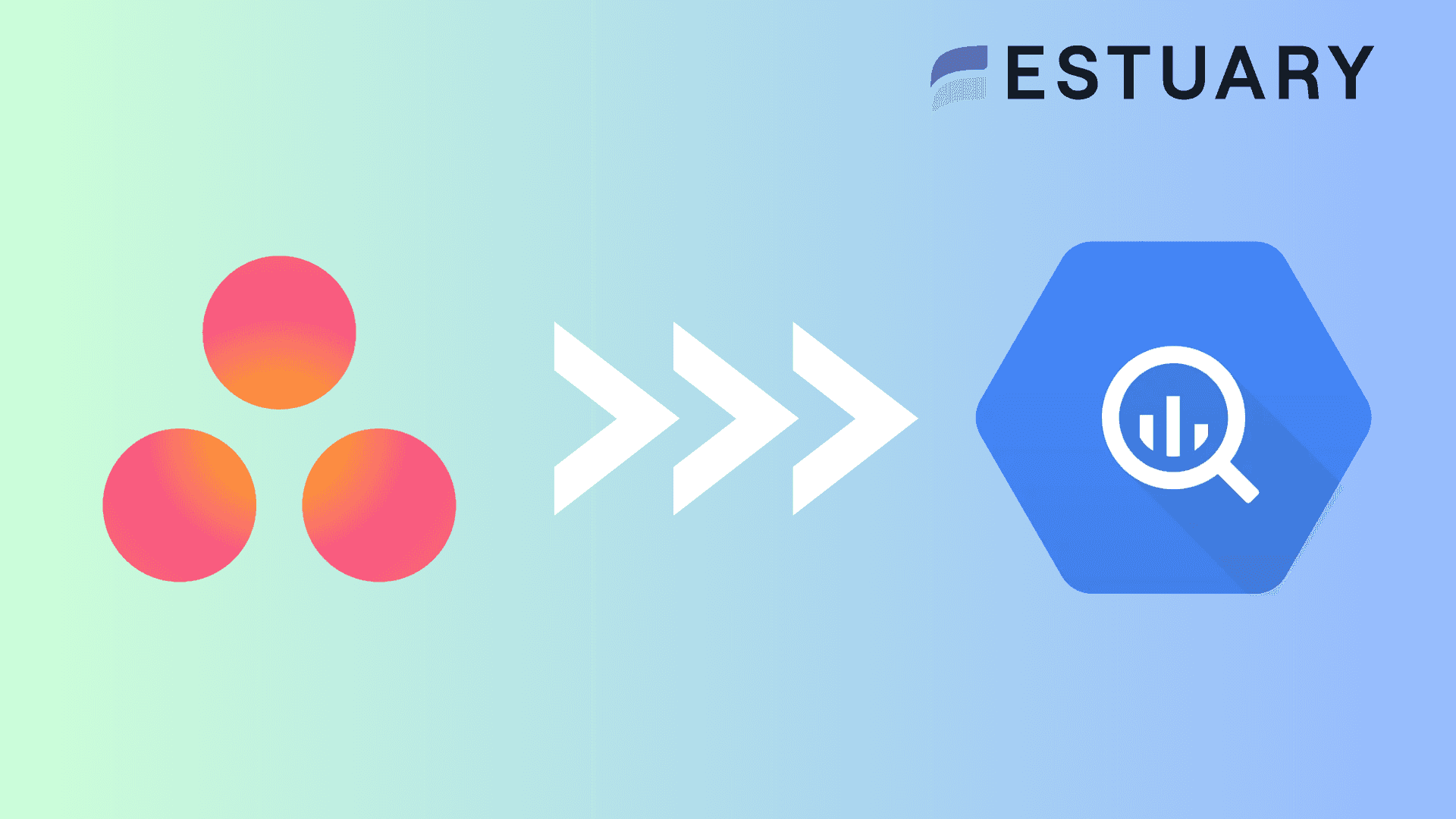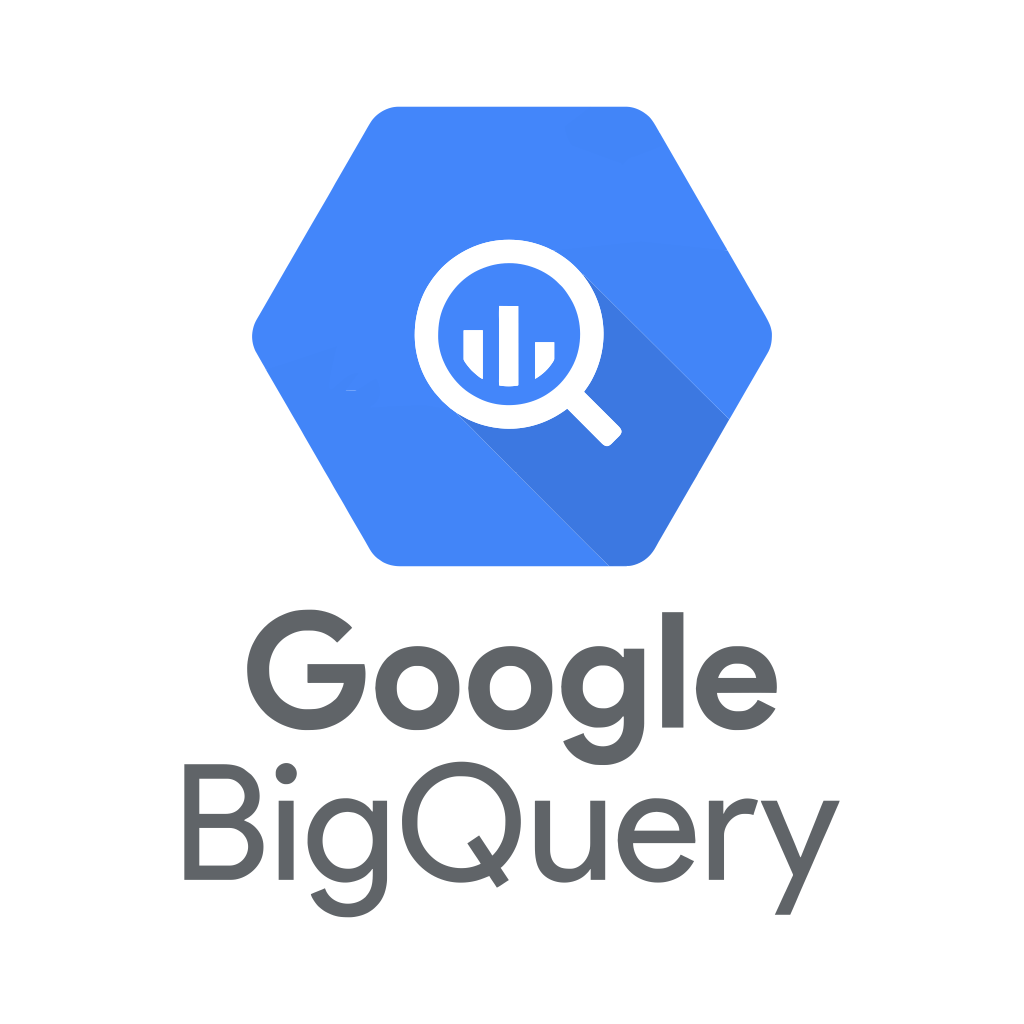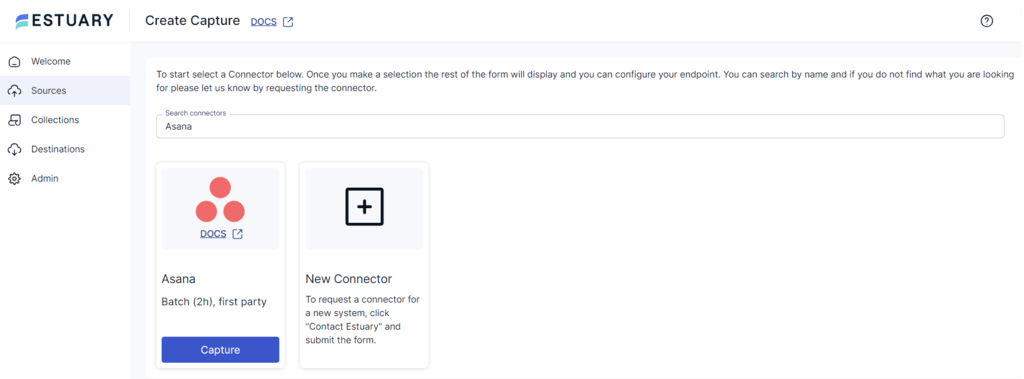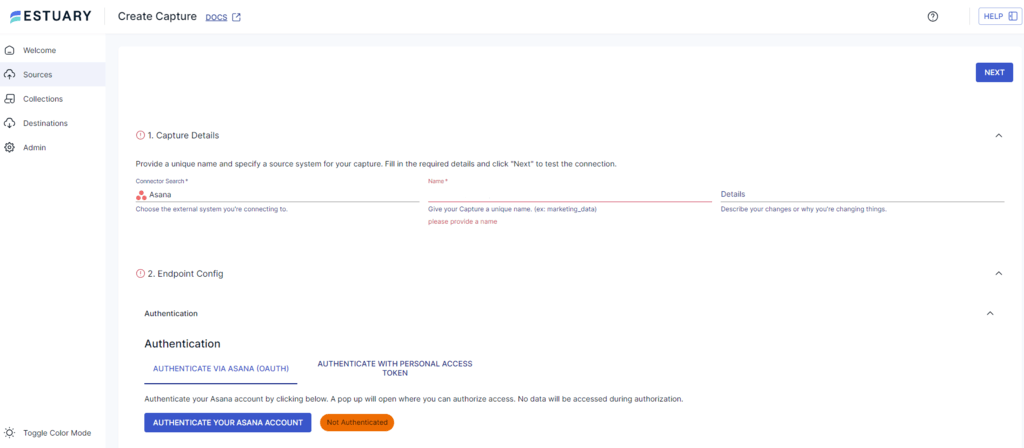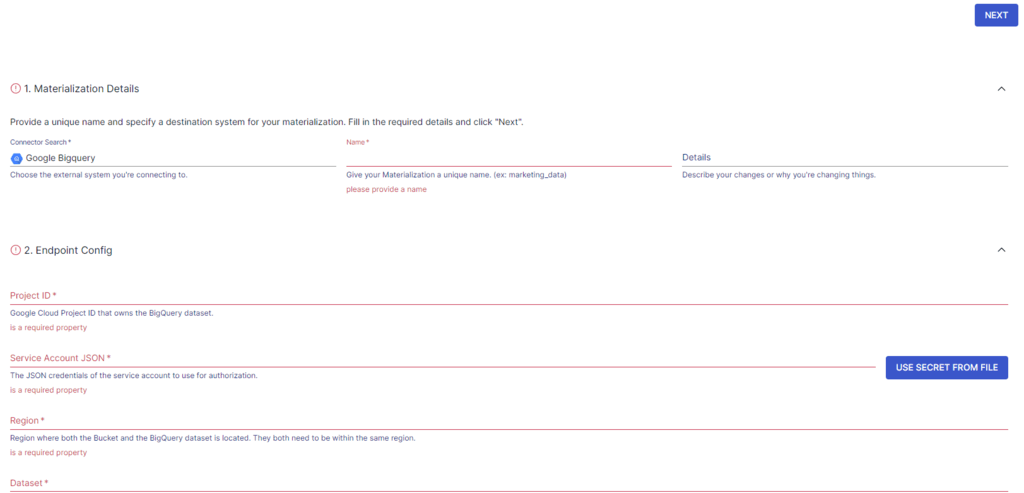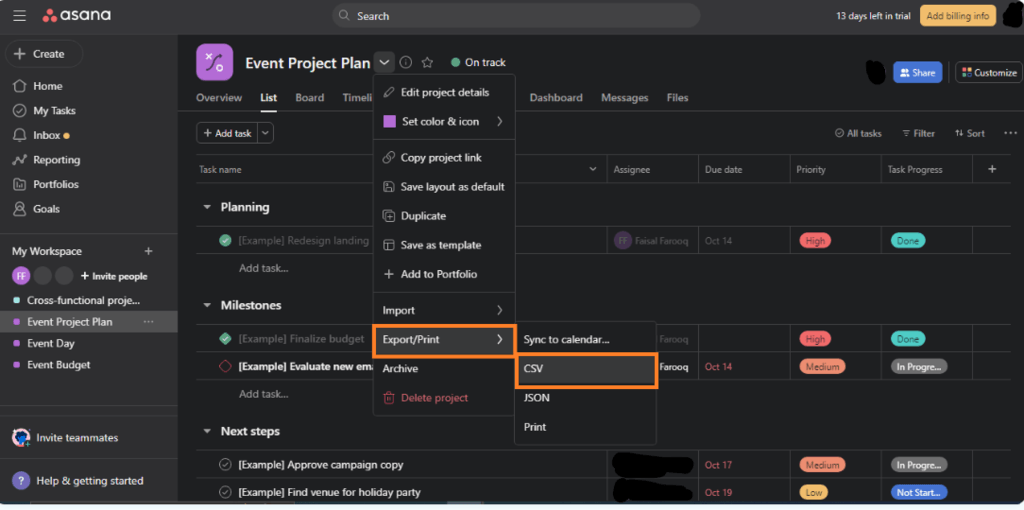
Asana is a powerful project management tool used to track tasks, timelines, and workflows across teams. However, as your projects grow in size and complexity, the need for advanced data analysis and reporting becomes essential. That’s where Google BigQuery comes in—an enterprise-grade data warehouse that allows you to run complex SQL queries on large datasets and gain actionable insights.
Integrating Asana with BigQuery lets you combine the power of project management with advanced analytics, enabling you to track project performance, identify trends, and make data-driven decisions to enhance productivity.
In this guide, we'll walk you through 2 simple steps to connect Asana to BigQuery, streamlining your data integration process for fast and efficient reporting. Let’s get started!
An Overview of Asana
Asana is a cloud-based work management platform designed to help teams efficiently track, manage, and collaborate on projects. It enables seamless collaboration across different teams within an organization, streamlining various management tasks to improve workflow.
At the core of Asana are workspaces, which are essential for project management and team coordination. These workspaces can be customized for specific clients or teams, offering tailored solutions for different projects. Asana also enhances productivity with robust project, task, and calendar management features, automating repetitive tasks to free up time for more strategic work.
Asana provides a comprehensive record of all projects and activities, making it easy to monitor and refine processes. By exporting data from Asana to analytical tools like BigQuery, you can further analyze performance and gain deeper insights to optimize your workflows.
An Overview of Google BigQuery
Google BigQuery is a fully managed, serverless data warehouse that allows you to focus on data analysis rather than managing infrastructure. By eliminating the need for system upkeep, BigQuery streamlines the process of managing large datasets, making it easier to derive valuable insights.
BigQuery supports both interactive and batch SQL queries. Interactive queries are executed on-demand, while batch queries can be scheduled or triggered by specific events, providing flexibility in managing data workflows.
Key features of BigQuery include:
- High Performance: BigQuery’s architecture decouples storage and compute, allowing each to scale independently. This design, along with its serverless infrastructure, ensures optimal query performance and operational efficiency, even for large-scale data operations.
- Scalability: BigQuery handles petabyte-scale data with ease, utilizing virtual CPUs (slots) for executing SQL queries. Its slot autoscaling feature dynamically adjusts resources based on workload, ensuring consistent performance as your data demands fluctuate.
- Business Intelligence Integration: BigQuery integrates seamlessly with popular BI tools like Power BI, Tableau, and Looker. This enables you to create detailed visual reports and dashboards, providing actionable insights through enhanced data visualization. Additionally, BigQuery’s BI Engine further enhances query performance for real-time analytics.
Why Ingest from Asana to BigQuery?
Some of the reasons why you should migrate data from Asana to BigQuery are as follows:
- Advanced Analytics: While Asana is great for managing tasks and workflows, its analytics capabilities are limited. BigQuery, with its powerful data processing engine, enables you to perform complex data analysis, uncover trends, and gain detailed insights into your operational workflows that go beyond Asana’s native reporting tools.
- Enhanced Data Security: BigQuery offers robust security features like encryption, IAM (Identity and Access Management), and role-based access control. These advanced security measures protect your data from unauthorized access and cyber threats, providing a higher level of security than Asana’s standard protections.
- Reporting and Visualizations: Asana's built-in reporting features are basic. Migrating your Asana data to BigQuery allows seamless integration with BI tools like Power BI and Tableau, enabling you to create advanced reports and visualizations. These tools help you transform raw data into actionable insights, improving decision-making across your organization.
How to Connect Asana to BigQuery: 2 Methods
Here are two simple methods to connect Asana to BigQuery for seamless data integration and advanced analytics.
- Method 1: Using Estuary Flow to Connect Asana to BigQuery
- Method 2: Using CSV Export/Import to Integrate Asana and BigQuery
Method 1: Using Estuary Flow to Connect Asana to BigQuery
Estuary Flow is a real-time ETL platform that simplifies data integration from multiple sources into a centralized destination. It offers a user-friendly interface and an extensive library of 200+ connectors for seamless data migration.
Some of the critical features of Estuary Flow include:
- No-code Configuration: Estuary Flow's no-code capabilities allow you to create data pipelines easily, even without extensive programming skills. You can utilize its connectors to configure your sources and destinations for quick, cost-effective data integration.
- Real-time Integration: The platform enhances operational efficiency with real-time data integration capabilities. It significantly reduces data transfer latency, helping you generate faster insights and make well-informed decisions.
- Many-to-many Connections: Estuary Flow supports many-to-many relationships, which link a single data record in one table to multiple records in another. This feature allows you to effectively manage complex data relationships, join tables, and define foreign keys to access required data quickly.
- Data Transformation: Estuary supports real-time data transformation using streaming SQL; you can modify source data into any required format for streamlined data management and analysis.
- Change Data Capture: Estuary’s change data capture (CDC) capabilities allow you to track changes at the data source in real time. This ensures that any updates made at the source are immediately reflected in the destination database.
Before you get started with the steps involved in connecting Asana to BigQuery, here are some prerequisites to ensure:
- An Asana account
- A Google BigQuery dataset and a GCS bucket in the same region
- An Estuary account
Step 1: Configure Asana as a Source
- Log in to your Estuary account.
- On the dashboard, select Sources from the left-side pane.
- Click the + NEW CAPTURE button on the top left corner of the Sources page.
- In the Search connectors box, type Asana. The Asana connector will appear in the search results. Click its Capture button.
- Now, on the Create Capture page, enter details like a Name for your capture. In the Endpoint Config section, select the OAUTH or PERSONAL ACCESS TOKEN method of authentication.
- Then click on NEXT > SAVE AND PUBLISH.
The Asana connector will capture your Asana data into Flow collections.
Step 2: Configure BigQuery as a Destination
- After configuring the source, a pop-up window containing details of the capture will appear. To set up the destination, click MATERIALIZE COLLECTIONS in this pop-up.
Alternatively, you can navigate to the dashboard and click Destinations > + NEW MATERIALIZATION.
- In the Search connectors box, type BigQuery. When you see the BigQuery connector option, click its Materialization button.
- Now, on the Create Materialization page, enter details like Name, Project ID, Dataset, Bucket, etc.
- Use the Source Collections section to link the capture of Asana data to the materialization.
- Click NEXT > SAVE AND PUBLISH.
The connector will materialize Flow collections of Asana data into BigQuery tables.
Method 2: Using CSV Export/Import to Integrate Asana with BigQuery
If you prefer a manual approach, you can export data from Asana as a CSV and then import it into BigQuery. This method is more time-consuming but still effective.
Step 1: Export Asana Data as a CSV
- Log in to your Asana account. Navigate to the project you want to export.
- From the top menubar, click on the drop-down arrow next to your project name.
- Select Export / Print > CSV from the drop-down menu.
The exported CSV file will be saved to your local system. Before exporting this file into BigQuery, consider uploading it to a Google Cloud Storage bucket.
Step 2: Load Asana CSV Data to BigQuery
- Log in to your Google Cloud account and navigate to the BigQuery page.
- Enter the following bq load command in the query editor:
plaintextbq load --source_format=CSV --schema=./myschema.json myproject.mydataset.mytable gs://mybucket/mydata.csv- Replace myproject.mydataset.mytable with the BigQuery destination table.
- gs://mybucket/mydata.csv defines the Google Cloud Storage URI where your CSV file is stored.
- Click on Run to execute the query.
This will load your CSV data from GCS into your specified BigQuery table.
Challenges of the CSV Export/Import Method
- Time-Consuming: Manually ingesting data from Asana to BigQuery using CSV files can be labor-intensive. The process may take longer to move large data volumes or frequently updated data.
- Latency Issues: CSV export/import method does not support real-time data transfer due to the significant latency involved in the process. This leads to delays in updating the destination dataset and potentially slowing the insight generation crucial for timely business decisions.
- Absence of Automation: The manual nature of CSV file transfers results in data inconsistencies causing data integrity issues. Due to the lack of automation, it leads to increased resource consumption and ultimately higher costs.
Conclusion
Connecting Asana to BigQuery enhances your organization’s ability to analyze workflow efficiency in greater depth. By integrating these two platforms, you can identify critical issues such as project delays, uneven workload distribution, and communication gaps between teams, allowing you to optimize workflows and improve productivity.
There are two methods for integrating Asana with BigQuery. One approach involves using CSV files for data transfer, but this method is often inefficient due to data inaccuracies and latency. A more effective option is to use Estuary Flow, a real-time data integration tool that automates the transfer process, ensuring accurate and timely data synchronization for deeper insights and improved operational efficiency.
Sign up for Estuary Flow today and streamline your Asana to BigQuery integration for real-time insights and improved decision-making.
FAQs
Can Asana provide advanced analytics for detailed project insights?
Asana’s reporting features are relatively basic, designed for high-level project tracking. If you need advanced analytics such as identifying bottlenecks, tracking team efficiency, or conducting in-depth trend analysis, you’ll need a more robust solution like BigQuery. BigQuery allows you to run complex SQL queries and perform detailed analytics on your Asana data for more actionable insights.
What’s the easiest way to connect Asana to BigQuery?
The manual method of exporting CSVs from Asana to BigQuery can be slow and prone to data inaccuracies. A more efficient solution is using Estuary Flow, which automates the data integration process, enabling real-time syncing between Asana and BigQuery. With Estuary, you eliminate manual errors and ensure your data is always up to date, saving time and improving operational efficiency

About the author
Rob has worked extensively in marketing and product marketing on database, data integration, API management, and application integration technologies at WS02, Firebolt, Imply, GridGain, Axway, Informatica, and TIBCO.
Popular Articles





